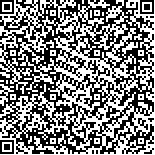| This article has been:Browse 1533Times Download 2561Times |

scan it! |
|
|
| DOI:10.13522/j.cnki.ggps.2020557 |
|
| Responses of Photosynthetic Characteristics and Carbon Metabolism of Flag Leaves of Winter Wheat after Anthesis to Irrigation Period and Frequency |
|
ZHANG Xiaoqi, YANG Si, SHI Yongfeng, XU Jiarui, YANG Zhenping, GAO Zhiqiang
|
|
1.College of Agriculture, Shanxi Agricultural University, Taigu 030801, China;2. Taigu District Meteorological Bureau, Taigu 030801, China
|
| Abstract: |
| 【Objective】In order to provide theoretical and technical support for water-saving and efficient production of Winter Wheat in Jinzhong region, the carbon metabolism of winter wheat after anthesis was studied under different irrigation conditions.【Method】According to the irrigation period, were set seven irrigation treatments. Wintering (W), Jointing (J), Booting (B), Wintering+Jointing (WJ), Wintering+Booting (WB), Jointing+Booting (JB), Wintering+Jointing+Booting (WJB), and non-irrigation as control (CK), in the whole stages analysis of winter wheat photosynthetic characteristics after anthesis, sugar metabolism and grain weight of grain.【Result】①Compared with CK, with the increase of irrigation frequency, the Pn and Gs of flag leaves, the metabolic activities of SPS and SS, the sucrose content and soluble sugar content of flag leaves, the sucrose content and soluble sugar content and starch contents of grains of winter wheat after anthesis, which were increased first and then decreased, JB treatment was the highest, while the 1000-grain weight decreased with the increase of irrigation frequency. ②Among the different treatments, the carbon metabolism of irrigation 2 water JB treatment was the best, followed by WB and WJB treatment; Compared with CK, the yield was increased by 35.57% to 85.20%, and WJB treatment with 3 water was the highest, followed by WB treatment. ③Correlation analysis showed that there was a significant positive correlation between 1 000 grain weight and grain starch content (P<0.01); the net photosynthetic rate, stomatal conductance, transpiration rate of flag leaves, the activities of SPS and SS enzymes of flag leaves, the amount of sucrose and soluble sugar of flag leaves, and the amount of sucrose and soluble sugar of grains were significantly positively correlated (P<0.01).【Conclusion】Comprehensive yield and carbon metabolism related indicators, wintering and booting stage irrigation 2 water (WB treatment) was the best. |
| Key words: irrigation period and frequency; winter wheat; photosynthetic characteristics; carbon metabolism; yield |
|
|